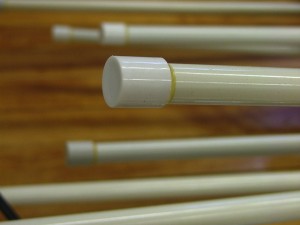(or: Why We Don’t Have Introductory Courses About the Internet)
I study the Internet. That’s what I do.
We’re coming up on the Internet’s 42nd birthday. We just passed the Web’s 20th birthday. Why is it so hard to teach freshmen about them?
That is, why are so many of our courses about the Internet and digital media non-required electives? Why do we offer certificates and minors in “new media” and “digital media”? Don’t those mean that a plain-old bachelor’s degree about media means “analog media” and new technologies are optional?
Media-related disciplines were originally founded to encompass, interrogate, and/or support particular technological forms and industries. Increasing professionalization in the press led to my university’s Journalism program in 1902, the rise of television led to the study of “mass” communication and the founding of the first communication research program here at Illinois in 1947, and so on. The communication department here used to be dedicated to the medium of the human voice (it was the Department of Oration).
Although the media world has never been static, in the last 10 years computing, the Internet, and digital convergence have irrevocably transformed the technological forms and media industries that our system of undergraduate education has taken for granted. Yes, now we have new Internet Institutes, but what about all that older stuff still hanging around?
It’s a Great Career Move to Love Media
This link to real, material objects and systems is exciting. It presents a remarkable opportunity: media themselves, by most definitions of the word, are more popular than ever.
Declines in the use of traditional media forms are being matched and even exceeded by gains in attention made by new media (as video is replaced by gaming, or reading in print is replaced by reading online). It is commonly said that attention is shifting away from television, but the average American still spends around 5 hours per day watching video in some form, they simply use different devices (computers) and formats (YouTube, Facebook).
Indeed, newly vibrant media technologies have emerged and attracted very large and even unprecedented populations of devoted users and new libraries of content (e.g., gaming, smartphones, …). And undergraduate interest in media and communication related majors is increasing.
What is a “Media Job”?
But it’s common knowledge that this opportunity has been accompanied by turmoil in the media industries. As some of our media- and communications-related programs are committed to professional training and relationships with particular industries (Journalism, Cinema Studies, …), the disruption is obviously unprecedented.
This isn’t because the industry has gone away — rather we are still looking toward The Los Angeles Herald-Examiner when we think about a “media company.” We should be looking at Microsoft, Zynga, Twitter, and more.
Even in media-related programs that employ a broadly-based liberal arts approach, substantial topical revision has been important to retain student interest. And still the pace of change in the world has outstripped the University’s ability to adapt by a large margin (or a larger margin than usual).
So far, we at the university sort of suck at this digital media stuff.
Why are we so Out of Date?
Curriculum reform is — to put it bluntly — a monster.
It is a democratic process grounded in faculty governance and program autonomy. While a new course can be proposed by a faculty member or a doctoral student seeking to pursue their own teaching interests (or, ideally, student interests as well), curriculum reform can be an attempt to motivate changes among faculty who would not otherwise change. Or at least it can be an attempt to get those faculty to agree to new changes.
Some entrenched interests are likely to support any given status quo configuration of curricula, providing a great deal of inertia. Indeed, while curriculum changes may benefit student recruitment, satisfaction, and even learning, the faculty reward structure for curriculum reform is not clear at all, and it can be (in the worst case) a contentious, time-consuming process consisting mostly of meetings and negotiations.
In the best case, curriculum reform is organically motivated as a normal part of faculty professional responsibility and produces a renewed, shared vision that is in accord with educational mission of the discipline. Yet this is rare enough that programs in media and communications at other universities remain the “Department of Radio” when this does not describe them and give degrees in “Film” that do not involve cellulose acetate (film).
So we’re in this situation now: Media careers are now increasingly information technology-related careers as the Internet and convergence has transformed these industries. Although it is crucial to continue to teach about media in a historically-grounded comparative way, beyond the valuable examples in comparative media history there isn’t much in the curriculum that refers to the present day and is “analog media.”
Let’s go, “Digital 101.”
Goodbye, “New Media 599.”
This is overdue.
[Note: I cross-posted this at the Social Media Collective. –CS]




